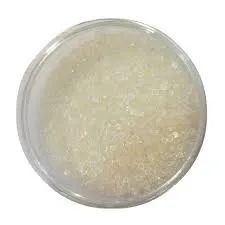Pentoxifylline An Overview of Its Uses and Benefits
Pentoxifylline is a medication primarily used to improve blood flow in patients suffering from conditions that require enhanced circulation. Classified as a xanthine derivative, pentoxifylline works by decreasing blood viscosity and improving red blood cell flexibility. This characteristic makes it a valuable tool in treating various vascular disorders and conditions associated with impaired blood flow.
Mechanism of Action
Pentoxifylline acts by inhibiting phosphodiesterase, which leads to an increase in cyclic adenosine monophosphate (cAMP) levels in the cells. The elevation of cAMP results in smooth muscle relaxation, influencing microcirculation positively. As a result, the drug reduces the thickness of the blood, making it easier for red blood cells to deform and pass through smaller blood vessels. This improvement in blood flow can enhance oxygen delivery to tissues, which is particularly beneficial in conditions characterized by circulatory issues.
Clinical Uses
1. Peripheral Artery Disease (PAD) One of the most common uses of pentoxifylline is in the management of peripheral artery disease, which is characterized by reduced blood flow to the limbs due to narrowed arteries. Patients with PAD often experience claudication, or leg pain during exercise. Pentoxifylline has been shown to alleviate this pain by improving circulation and enhancing exercise tolerance.
2. Diabetic Foot Ulcers Pentoxifylline is also used in the treatment of diabetic foot ulcers, which can arise from poor circulation in diabetic patients. By improving blood flow to the affected area, pentoxifylline helps promote healing and reduces the risk of infection. Studies have demonstrated that the use of this medication can lead to significant improvements in ulcer healing rates.
3. Chronic Venous Insufficiency Chronic venous insufficiency (CVI) occurs when veins in the legs do not adequately return blood to the heart, leading to symptoms such as swelling, pain, and skin changes. Pentoxifylline can assist in enhancing blood flow and reducing the complications associated with CVI.
pentoxifylline tab

4. Other Conditions While these are the primary indications, pentoxifylline has also been explored for various other conditions, including tinnitus, Raynaud's phenomenon, and even certain autoimmune disorders. However, its efficacy in these areas requires further investigation.
Dosage and Administration
Pentoxifylline is typically administered in tablet form and should be taken with food to enhance absorption and minimize gastrointestinal side effects. The usual dosage depends on the condition being treated but generally ranges from 400 mg to 1200 mg per day, divided into multiple doses. Patients are encouraged to follow their healthcare provider's instructions closely to optimize the benefits of the medication while minimizing potential side effects.
Side Effects and Precautions
While pentoxifylline is generally well-tolerated, some patients may experience side effects, including nausea, dizziness, headache, and gastrointestinal distress. Rarely, more serious adverse effects like bleeding complications, particularly in patients taking anticoagulants, can occur. Therefore, it is crucial for patients to inform their healthcare provider of all medications and supplements they are taking.
Certain populations, such as those with a history of myocardial infarction or heart failure, should use pentoxifylline with caution. Routine monitoring is essential to address any concerns promptly and ensure the safe use of this medication.
Conclusion
Pentoxifylline is a significant therapeutic option for patients with conditions marked by impaired blood flow. Its effectiveness in enhancing microcirculation and the delivery of oxygen to tissues can lead to improved quality of life for individuals suffering from various vascular disorders. As with any medication, careful consideration of potential side effects and monitoring by healthcare providers ensure the best outcomes for patients. With ongoing research, pentoxifylline's role in treating even more circulatory-related conditions may continue to expand, offering hope for improved treatments in the future.

